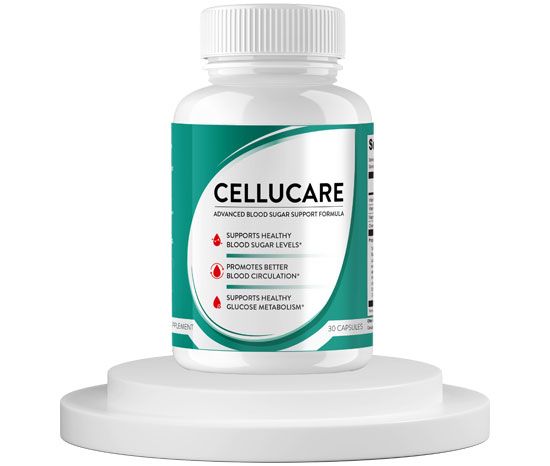In the world of chemistry, names and formulas can often feel like puzzles. One such formula is HCOOH CH₂ H₂O, a compound that draws attention in both academic studies and practical fields. Put simply, it is a molecular form that brings together carbon, hydrogen, and oxygen in a way that reveals unique chemical properties. While the formula itself may look intimidating, the substance behind it is easier to understand when broken into simpler terms.
HCOOH CH₂ H₂O matters because it is more than just a collection of letters and numbers on paper. It represents the kind of compound that appears in research labs, plays a role in environmental discussions, and helps scientists explore the connections between chemistry and everyday life. From laboratory synthesis to real-world applications, this compound demonstrates why even small molecules can carry big importance.
By exploring its structure, properties, preparation, uses, and environmental aspects, we can see why HCOOH CH₂ H₂O continues to be studied and applied in multiple areas of science and industry.
Chemical Structure and Composition of HCOOH CH₂ H₂O
At its core, HCOOH CH₂ H₂O reflects a combination of atoms arranged in a specific way. The notation shows us carbon bonded to both hydrogen and oxygen, which is typical of many organic acids. The “HCOOH” portion represents formic acid, the simplest carboxylic acid. When paired with “CH₂ H₂O,” it suggests a hydrated or extended form where additional hydrogen and oxygen atoms are present.
What makes this interesting is not just the atomic formula but also the way these atoms bond. In chemistry, structure determines function. The presence of both carbon and oxygen gives the compound acidic qualities, while hydrogen atoms allow it to participate in important reactions. By studying the arrangement of HCOOH CH₂ H₂O, scientists can predict how it behaves in different conditions, whether it reacts strongly with bases, or how it interacts with water and other organic molecules.
This structural understanding lays the foundation for everything else, from its physical characteristics to its real-world applications.
Physical and Chemical Properties
Like most organic acids, HCOOH CH₂ H₂O carries a set of physical and chemical traits that make it identifiable. Physically, compounds in this category are often colorless liquids or crystalline solids that dissolve easily in water. They may have a sharp or pungent smell, typical of formic acid–based substances.
Chemically, the molecule shows acidity, meaning it can donate protons (hydrogen ions) in a reaction. This makes it useful in neutralization reactions, where it balances out alkaline substances. The presence of both carbon and oxygen also allows it to form hydrogen bonds, which influences its boiling and melting points.
Reactivity is another key property. HCOOH CH₂ H₂O can interact with metals, release gases under certain conditions, and serve as a building block in organic synthesis. These behaviors explain why scientists pay attention to its chemical makeup and how it fits into larger reaction cycles.
Methods of Preparation and Synthesis
In laboratory settings, HCOOH CH₂ H₂O can be prepared in several ways. One common route is through controlled oxidation of methanol or other simple alcohols. This process allows chemists to obtain formic acid structures, including hydrated forms like CH₂ H₂O variants.
Another method involves the breakdown of natural substances. Some biological processes, such as fermentation or microbial activity, naturally generate small organic acids, including HCOOH-based molecules. By isolating and purifying these acids, researchers can produce usable quantities.
Modern industry often prefers chemical synthesis routes, since they allow for consistency and large-scale production. The key lies in maintaining purity and stability, as even small variations in synthesis can change the way the compound behaves in later applications.
Common Applications in Research and Industry
The versatility of HCOOH CH₂ H₂O makes it valuable in both research and industry. In laboratories, it is often used as a reagent — a substance added to cause chemical reactions. Its acidity makes it suitable for adjusting pH levels, dissolving compounds, or supporting experiments in organic chemistry.
In industry, compounds like HCOOH CH₂ H₂O play roles in textile processing, leather treatment, and certain cleaning solutions. They can act as preservatives, disinfectants, or catalysts depending on the context. Some renewable energy studies also explore organic acids as potential contributors to fuel systems or green chemistry solutions.
Beyond direct use, the compound’s importance lies in its role as a teaching and learning tool. By studying molecules like this one, students and scientists gain insights into broader chemical principles.
Safety Considerations and Handling Guidelines
Like many acids, HCOOH CH₂ H₂O requires careful handling. Direct contact with the skin may cause irritation, while inhaling its vapors could affect the respiratory system. Protective equipment, such as gloves, goggles, and proper ventilation, is always recommended when working with the substance.
Storage also matters. The compound should be kept in sealed containers, away from heat sources or reactive metals. Even small spills should be cleaned up promptly, since residues may corrode surfaces or release fumes.
In industrial settings, safety protocols include regular monitoring of air quality and staff training. By respecting these guidelines, risks can be minimized, and the compound can be handled safely and effectively.
Environmental Impact and Sustainability Aspects
Modern chemistry does not just focus on how compounds work but also on how they affect the environment. For HCOOH CH₂ H₂O, the picture is mixed. On the one hand, it is biodegradable and can break down naturally over time. This reduces the risk of long-term pollution compared to more persistent chemicals.
On the other hand, high concentrations can be harmful to ecosystems. Acidic compounds may disrupt soil chemistry, affect water quality, or harm aquatic organisms if released in large amounts. For this reason, responsible use and disposal are essential.
Sustainability research is ongoing, with scientists exploring renewable methods of producing organic acids. By turning to bio-based synthesis and reducing reliance on fossil fuels, chemistry aims to make compounds like HCOOH CH₂ H₂O more environmentally friendly in the long run.
Conclusion
HCOOH CH₂ H₂O may look like a complex formula, but at its heart, it is a simple and important organic compound. By understanding its structure, properties, preparation, and uses, we can appreciate how such molecules contribute to both science and daily life. Its applications span research, industry, and environmental studies, showing its versatility and relevance.
As with many chemicals, safe handling and sustainable use are key. By combining scientific knowledge with responsible practices, HCOOH CH₂ H₂O can continue to serve as a valuable resource without causing unnecessary harm.
In the broader context, studying compounds like this reminds us why chemistry is central to solving modern challenges. From laboratory experiments to real-world applications, molecules such as HCOOH CH₂ H₂O hold a place in both discovery and innovation.
FAQs
1. What does HCOOH CH₂ H₂O represent in simple terms?
It is a form of organic acid, related to formic acid, that contains carbon, hydrogen, and oxygen atoms arranged in a specific way.
2. How is HCOOH CH₂ H₂O commonly used in laboratories?
It is used as a reagent for experiments, a pH adjuster, and a building block in organic synthesis.
3. Is HCOOH CH₂ H₂O safe for everyday handling?
With proper safety precautions, it can be handled safely. However, direct contact or inhalation should always be avoided.
4. Can HCOOH CH₂ H₂O be found in nature or is it only synthetic?
It can be produced both naturally, through biological processes, and synthetically, in laboratories or industries.
5. What are the key differences between HCOOH CH₂ H₂O and similar compounds?
The main differences lie in molecular structure and reactivity. While related compounds may share similar elements, their arrangement leads to distinct behaviors and applications.




